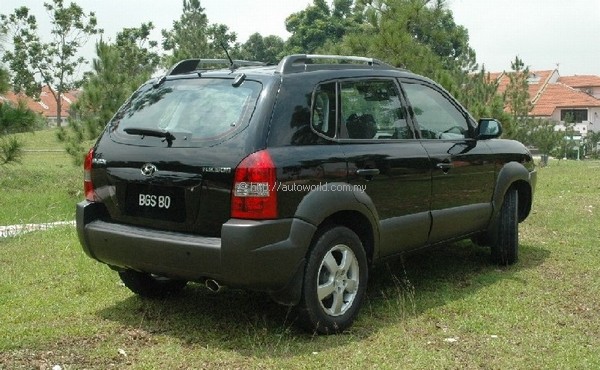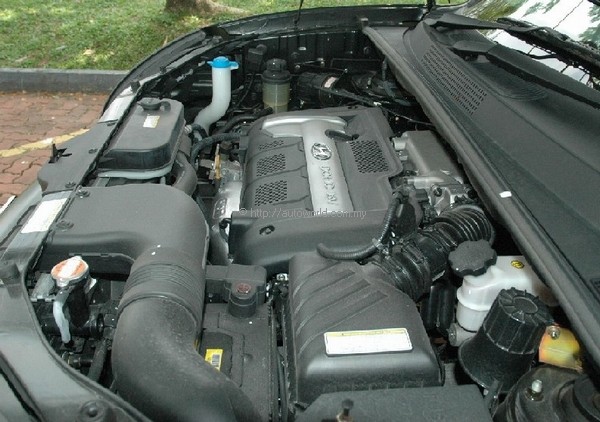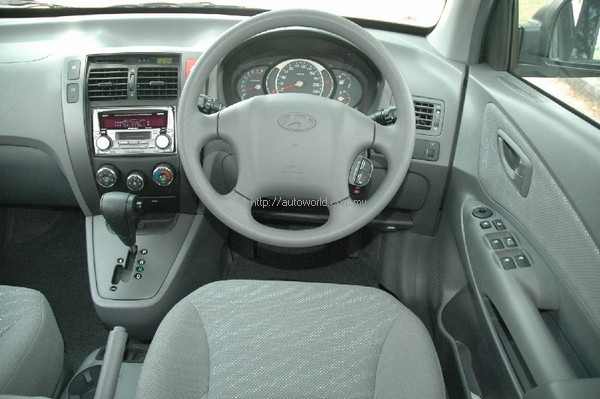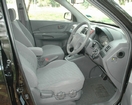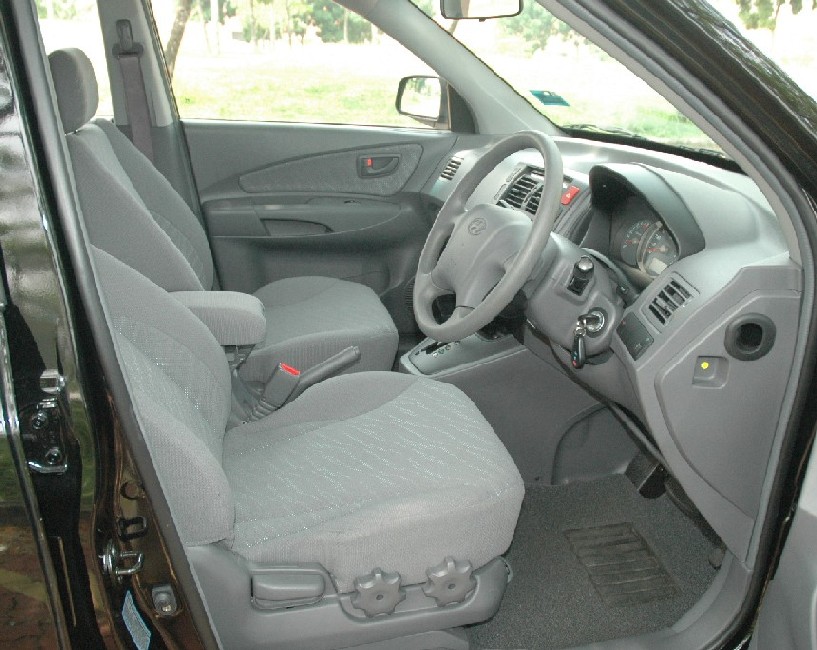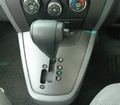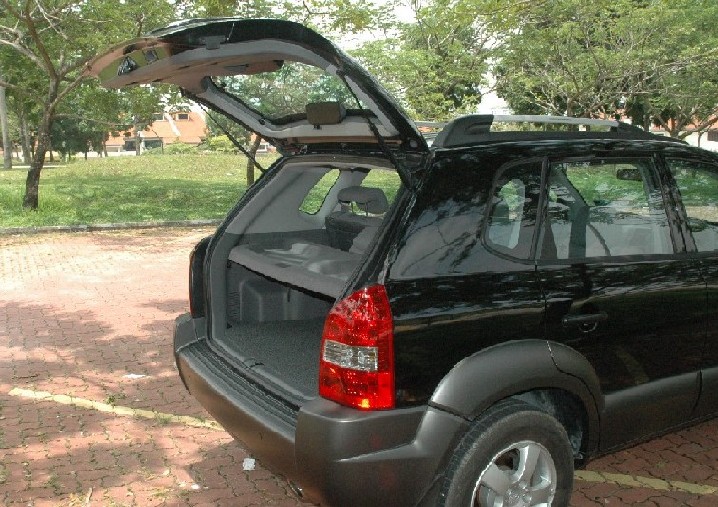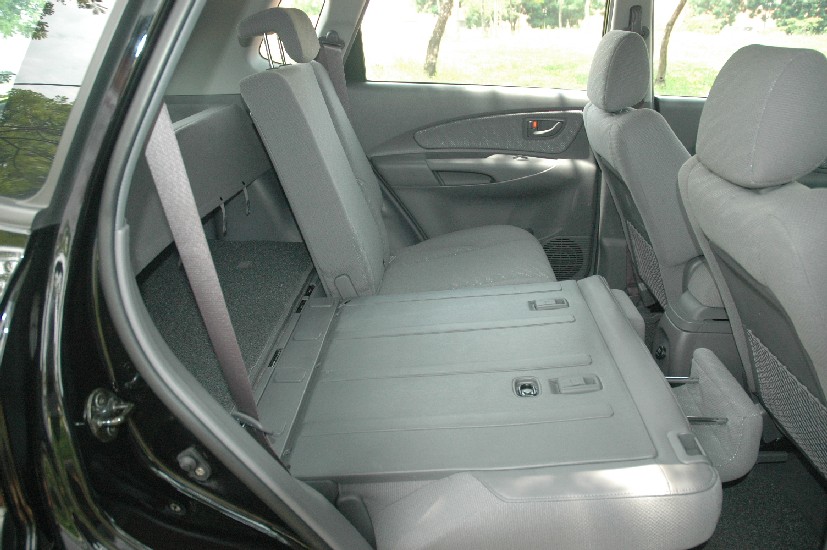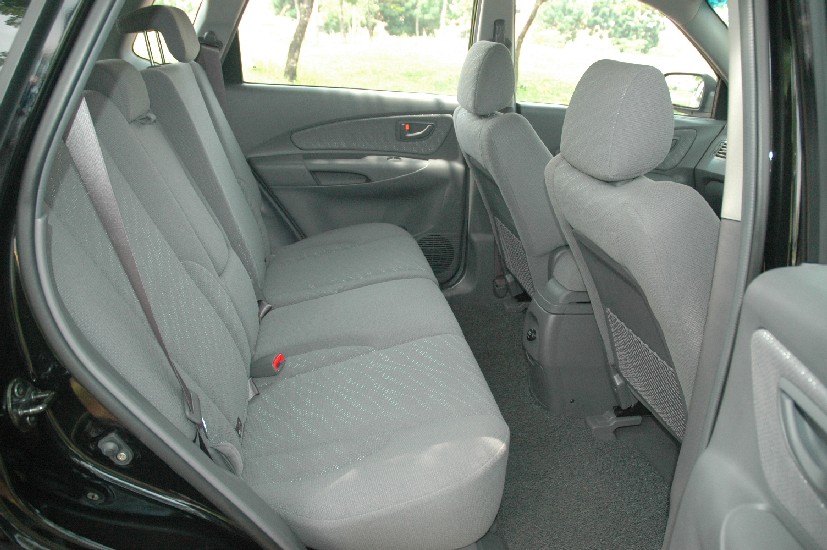Hyundai Tucson Tested
Hyundai Tucson – Built for American Lifestyles
Following closely behind the launch of the Hyundai Santa Fe, Hyundai-Berjaya Sdn Bhd, local importers and distributors of the Hyundai brand and recently acquired by the Sime Darby Group, launched the Hyundai Tucson. Both vehicles have all the attributes of a SUV, but come in FWD (Front Wheel Drive) to offer a more competitive price to the urban user who does not require 4WD.
With only one test unit available, it has taken them quite a while to get to us, but better late than never.
With a smaller capacity 2.0 litre DOHC fuel injected petrol engine, the Hyundai Tucson promises improved fuel economy, but with the same or better drivability with CVVT (Continuously Variable Valve Timing) that delivers a respectable 142 PS of power at 6,000 rpm and maximum torque of 18.8 kg.m at 4,500 rpm. In comparison, the Santa Fe, with a 2.4 litre engine has an output of 144PS at 5,500 rpm, but with a little more torque at 20.4 kg.m
The Hyundai Tucson, just like the Santa Fe, is available in either 4WD version or Front-Wheel Drive (FWD) version. Our test unit was the FWD version. Targeted at the younger age group looking for entry-level SUVs, the Tucson is outfitted to keep the cost low. Specifications are kept to a bare minimum; this is not meant to make the Tucson sound like it is nothing but a cheap vehicle, because there are some excellent features that add value to it, in addition to which there are numerous design features that give it a unique character.
For starters, the Hyundai Tucson is built on a brand new platform that was developed with the knowledge gained from the Santa Fe; it actually shares this platform with its sister car, the Kia Sportage. Size-wise, the Tucson, at 4325mm overall length is 175mm shorter than the Santa Fe, but surprisingly, its wheelbase of 2630mm is 10 mm longer. The result is a shorter overhang at the front and back, giving the Tucson a larger approach and departure angle.
Mated to the engine is a 4-speed automatic transmission that has a manual gear change option. The gearshifts are smooth and the ratios are set for good bottom end and mid-range acceleration. A 5-speed would have been more desirable, as this would have enabled a taller final drive ratio; as it is, the 4.626 final drive makes it a little thirstier. We managed around 370 kilometres from a full tank of premium gasoline.
The overall shape follows the same general lines as the Santa Fe; both vehicles look very similar, except for subtle differences here and there, such as a different front grill and headlight design, and over-fenders at both the front and rear wheels that increase the ‘masculinity’ of the Tucson.
Inside, the Hyundai Tucson comes with fabric seats, and seats five large size adults comfortably. The front seats slide and recline mechanically, and we found it easy to adjust for a comfortable seating position. The rear seats split and fold forward to provide additional stowage space when required, and they also thoughtfully allow some limited reclining for those who want to sit back and enjoy a snooze of sorts.
The rear tailgate opens up high and wide for easy loading and unloading, and the very thoughtful flip-up rear glass is carried over from the Santa Fe. Safety features include SRS airbags for front driver and front passenger.
The front suspension is MacPherson strut type, with coil springs and a 21mm anti-roll bar. The rear suspension is a multi-link arrangement with coil springs and a smaller 14mm anti-roll bar. Taking a quick look at the underside, we note the suspension members are sturdily built, and appear tough enough to take plenty of punishment. Attached to all of this are disc brakes for front and rear, with ABS thrown in. Tyres are 216/65 R16, fitted on attractive-looking, heavy-duty 5-spoke alloy rims.
The overall ride is pretty much like that of a car. It is firm, but not overly harsh; I would say it is well balanced, giving one a sense of well-being, but at the same time it is robust enough to tackle any occasional off-road adventure (not hardcore stuff, that is). With a body made for a 4WD configuration, it has the necessary ground clearance to ride high and safe over most obstacles; the large and solidly constructed tyres will allow you to roll over any potholes without any fear of bending your rims; the best of both worlds, so to speak. The Tucson will take you to the market, run up to the nursery for potted plants, pick up your children’s bicycles to go to the park, and take you to your golf course any day.
Ingress and egress is easy with the Tucson. Being higher than a normal car, you slide up into it rather than sit down. Older folks will appreciate this; it gets more and more difficult to have to ‘sit down’ into a car seat as one advances in years. Interior leg room is excellent, and there is plenty of space for lanky and large people. (Like I said earlier, this vehicle is geared for the American market, the land of Whoppers and Big Macs).
Being fully imported, the Hyundai Tucson has a little of an uphill battle. Pitched directly against it would be the Kia Sportage, which is built on exactly the same platform, has the exact engine, but comes complete with 4WD and traction control. The Kia Sportage sells for a sum substantially less than the Tucson, which retails for RM130,836.25, (price on-the-road without insurance).





